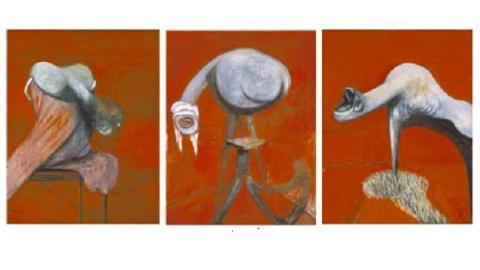The Bold and the Beautiful: Modern Art and Subtlety

A recent feature piece in The New York Times on the 25th Paris Biennale, currently at the Grand Palais until September 22nd, made the bold statement that “[f]uture historians may retain [it]… as a watershed in the history of Western culture.” The author, Souren Melikian, bases that prediction on the belief that the biennale “mirrors better than any event on the world scene our new approach to art.” “Interest in subtle nuances is receding as our attention span shortens,” Melikian goes on to argue. “Awareness of this trend probably accounts for the recent art trade emphasis on clarity and monumentality and the striking progression of 20th-century modernity.” In Melikian and others’ minds, the modern mind loves modern art, and modern art is nothing if not bold. Subtlety is for squares, or at least the generations of the past. From here on, will bold and beautiful always be linked? Or is there hope for subtler treasures?
Two examples of shining stars in this bolder is better argument of the biennale are Francis Bacon and Andy Warhol. Bacon’s 1970 triptych Three Studies in the Human Body dominates one wall in the characteristic Baconian way. Thanks to the recent centennial of Bacon’s birth and accompanying blockbuster exhibitions, the terrible visionary that painted works such as 1944’s Three Studies for Figures at the Base of a Crucifixion (shown above) seems right at home in the 21st century with his ghastly images of the 20th centuries worst self-destructive impulses. Warhol’s Double Hamburger does double duty as ancient Pop Art representative and harbinger of present-day marketing and artistry confusion. I’m not sure that I agree with the idea of Bacon as lacking subtlety. Certainly the gore sits on the surface, but beneath hide darker ideas of the human psyche. This repurposing of Bacon as simple carnage serves a modern agenda rather than the artist’s legacy. Warhol, on the other hand, I agree wholeheartedly with as a simple peddler of the simple. If any complexity exists in Warhol’s works, it’s in the single-minded drive of Andy and his factory to strip art down to another commodity in the great sea of commercialism in which the modern world slowly sinks. What hath Warhol wrought? Jeff Koons, Damien Hirst, and a whole array of “bold” artists that can be summarized on a fortune cookie while amassing great fortunes based more on slick marketing than artistic talent. Are we hearing the death knell of complex, subtle art that makes us think more deeply than when we down a hamburger?
I don’t think so, but the momentum is clearly on the side of the bold. The meek, such as 2009 Turner Prize winner Richard Wright (reviewed recently by me here) may yet inherit the earth, but only in a characteristically quiet way. Hirst’s jewel-encrusted skulls will always grab headlines, but Wright’s simpler, pensive work can engage hearts and minds in a more fulfilling way. And why is it important that the right thing happens and the Wrights win out over the Hirsts? Because art remains one of the few havens for thought in our noise- and light-polluted world. “The arts teach children that problems can have more than one solution and that questions can have more than one answer,” argued Elliot Eisner in The Arts and the Creation of Mind. In the bold new world of the Melikian’s biennale, there is room for only one answer, and sometimes not even that many. In a brave new world that looks to the past as part of the subtle creativity of possibility and questioning, we never run out of answers. I know which one I’d prefer my children to live in.





